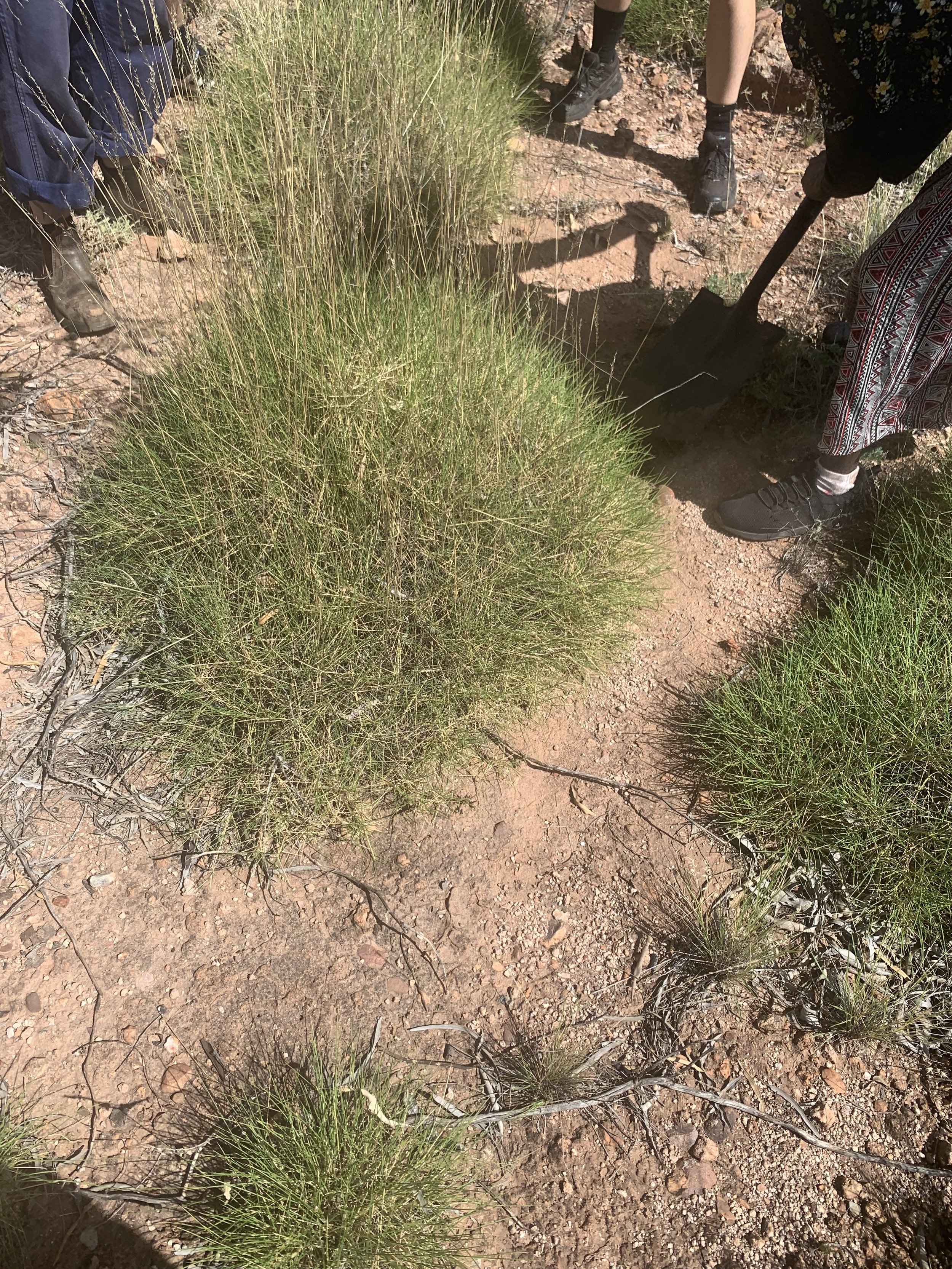I spent some time at local waste and reuse sites as a kind of generative blueprint. I toured the tip/Re-Discovery Centre, a scrap metal treasure trove-come-artists home, the Repair Café’ community event, and Anton’s Recycling. Foraging and repurposing seems a necessary way of life here where it’s so remote.
I also spent some time attempting to extract Spinifex resin for casting. Which is traditionally used by indigenous Australians for weapon making. I am interested in what the material can do.
My amateur science experiments have been mostly failures of sorts, or more like going to weird and extreme lengths trying to tame tempered and temperamental materials, and them not behaving in the way I imagine they could and would like them too. Making recipes to illogical ends. Cuspy edges court discomfort in ambiguity, and a messy entangled fray of porous half-formed thoughts that are then completed by another, forming a sprawling debris but with details.
The glass I found at the tip didn’t fuse in the kiln – something about its ‘coefficiency of expansion,’ which is a measurement of the rate glass will expand and contract through heating and cooling processes. Too many different kinds of glass mixed in together, and too many impurities. I decided to make them drawings instead.
I thought I found the Spinifex resin - these black clumped-together balls attached at the base of the plant, surrounded by ants. They look like black mustard seeds and smell sweet like honey. They leave charcoal-like marks on the tarpaulin as I thrash them. But through various processes of heating, I couldn’t make the kiti from these (presumably) resin clumps. Really at this point, in my naivety, I am just cooking dirt. That, or an ochetellus flavipes ant's nest. There’s humour in the tribulations. Trying to find the right amount, what holds, and what works. And I wonder if it’s play, or a looping (& loopy) attempt at repair.





